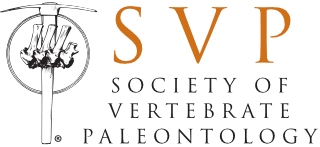GEORGE GAYLORD SIMPSON
To my generation (now retiring), George Gaylord Simpson was an Olympian figure, potent but remote.
His intellectual descent stemmed from both Marsh and Cope. With Richard Swann Lull as his Yale mentor, he monographed Marsh’s magnificent Mesozoic mammals from Como Bluff and elsewhere. A year later he produced a companion monograph of the British Mesozoic Mammalia. That convinced Henry Fairfield Osborn, director of the American Museum, to secure his services as an assistant curator, bringing him under the influences of W.D. Matthew, W.K. Gregory, and the newly acquired Cope Collection.
Throughout his career, Simpson unswervingly sought to illuminate the beginning of the age of mammals. His contributions in North America and Asia were fundamental, but his pursuit of this subject in South America was Herculean. He led the Scarritt Expeditions into Patagonia, extending the work of the brothers Ameghino, and thereby established that on that isolated continent several mysterious suites of native orders had evolved convergently with “normal” mammals on other continents.
But Simpson pursued his science across many major disciplines. Having recognized that the rich fossil record of mammals would provide a sound basis for their classification, he produced a massive classification replete with fantastic footnotes and philosophical explanations. This was somehow completed during the Second World War while he served in North Africa. (On their return through Italy, General Patton, noticing Simpson’s goatee, ordered him to shave it off. Simpson politely but firmly refused, stating that he was not in Patton’s unit, but worked instead for Intelligence.) Of all his brilliant endeavors, Simpson’s most fertile were probably his contributions to the modern evolutionary synthesis. There was a special synergism among the three men we credit with the synthesis: Theodosius Dobzhansky, the geneticist; Ernst Mayr, the speciationist; and George Simpson, the paleontologist.
Simpson’s vibrant style shined through his writings, on all kinds of subjects. Stephen Jay Gould, another great paleontologist and evolutionist whom we miss, commented more than once how he, Gould, avidly studied the elegance and cadence of his hero, Simpson. Perhaps because he came to Yale intending to be a poet, Simpson never failed to produce powerful, popular accounts of his work. His autobiography and many of his evolutionary writings are simply wonderful literature. Take for example this excerpt from “Attending Marvels,” recounting his early work in Patagonia:
“The fossil hunter does not kill; he resurrects. And the result of his sport is to add to the sum of human pleasure and to the treasures of human knowledge.” (1965, p. 82).
In 1978 I had the honor of presiding over the SVP meeting in Pittsburgh. At that time our society had determined to institute a new award — a medal, representing the society’s highest honor, to be presented each year to the person who had made the largest, most persistent contributions to the SVP. There was an undercurrent of discussion among the society’s leaders as to what name to give that new medal. Some of us advocated Simpson, but an equally solid groundswell favored Romer. At that same meeting, a charter member of the society passed me a unique old photo showing the society’s organizational meeting at Harvard in 1941. There were two distinguished VP’ers at the front desk, presiding over that inaugural meeting. Yep! They were Al Romer and George Simpson. How fortunate we are to have two such remarkable founders.
S. David Webb
Distinguished Research Curator Emeritus
Florida Museum of Natural History
University of Florida, Gainesville
ALFRED SHERWOOD ROMER
Dr. Alfred Sherwood Romer (1894 -1973) was the leading contributor to the discipline of vertebrate paleontology throughout the 20th century. He was founder and first president of the Society of Vertebrate Paleontology. His text book “Vertebrate Paleontology,” published in three editions from 1933 to 1966, set the standards of excellence for anatomical investigation, systematic analysis and evolutionary understanding that continue to form the basis for our discipline.
He was a superb educator at all levels: public presentations, classroom lectures, and supervisor of more than 25 graduate students. These professional descendants, now extending into the 4th or 5th generation, are a living legacy of his contributions and aspirations. He integrated and promoted the study of vertebrate paleontology to a degree that may never be equaled, as well as being a model for professional colleagues and friends. His enthusiasm for the discipline and life in general was always evident and contagious, always with a human touch and a great sense of humor.
Romer’s major contributions were in the areas of the ancestry of vertebrates, Paleozoic tetrapods, and the antecedents of mammals. But equally important was his capacity to unite the entire discipline with his concepts, text books, and general understanding. His publications spanned more than 50 years, from his epochal “The locomotor apparatus of primitive and mammal-like reptiles” in 1922, to the completion of 20 successive papers, collectively titled “The Chanares (Argentina) Triassic reptile Fauna,” in 1973. His books included “The Vertebrate Body,” (in six editions), “Osteology of the Reptiles,” and major reviews of labyrinthodonts and pelycosaurs. All of these works were based on his own research, from lab dissections to field collection of fossils ranging from ancestral sharks through a wide spectrum of archaic amphibians and the earliest fossils leading to modern reptiles and mammals. Romer, or “Al” as he preferred when working in the field, spent a month or more each summer from 1926 into his post-retirement years with his wife and a succession of graduate student collecting in the Lower Permian of Texas, separated only by major excursions to the South Africa Karroo, the maritime provinces of Canada, and the Triassic of South America. In all his activities, Romer provided the highest standards that we can hope to follow in the profession of vertebrate paleontology.
